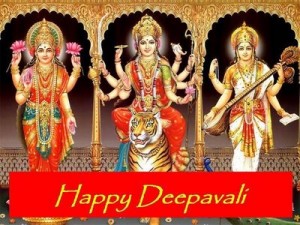By Sanjay Parekh
NHSF Learning Team
Diwali
Diwali, also known as Deepavali, is the festival of lights. If there is one occasion, which is all joy and jubilation for one and all, it is Diwali.
Origin
There are five origins to the celebrations of this auspicious day:
- Lord Rama returned to Ayodhya after his victory over Ravan in Lanka
- Lord Krishna vanquished Narkaasur, releasing people from misery
- Lord Pruthu extracted goodness from the earth
- During the Samudra Manthan, Lakshmiji emerged from the ocean
- The Pandavs returned from their forest exile
On this day, Lord Ram returned to the capital of his Kingdom Ayodhya, after an exile of 14 years, thrust upon him by his step -mother Kaikeyi. He returned in triumph and glory after eliminating the demon Ravan hence the crackers and lights signify his victorious return and the triumph of good over evil. The people of Ayodhya, overwhelmed with joy, welcomed Rama through jubilation and illumination of the entire capital.
Another great example of the victory of righteousness is that of Shri Krishna. Narakaasura was a demon king ruling over the present-day Assam. His power made him swollen-headed and he became a menace. The Gods implored Sri Krishna who was at Dwaraka (in the present-day Gujarat) to come to their rescue. Sri Krishna responded. He marched from the western end of the country to its eastern end, destroyed the huge army that opposed him, and finally beheaded Narakaasura. The people were freed from the oppressive tyranny and all heaved a sigh of relief. The 16,000 women kept in captivity by the demon king were freed.
It has been said that while Sri Rama unified the North and South of our country, Sri Krishna unified the West and the East. Sri Rama and Sri Krishna together therefore symbolize the grand unity of our motherland, India (Bharat).
In essence, people light divas on this day to depict their joy of being released from suffering inflicted by evil elements.
Rituals
Diwali is celebrated with much pomp and ceremony and is one of the widest celebrated festivals between Hindus. Diwali is known as the ‘Festival of Lights’ because people light divas and put up many lights to brighten up their houses. Towns and cities all over India are filled with lights and in full celebration. Even the humblest of huts will be lit by a row of lamps.
The floor, next to the entrance of people’s houses is decorated with ‘Rangoli’. A Rangoli is an intricate and artistic design or sketch, using coloured powder. It represents an auspicious welcome for Lakshmiji who visits people during Diwali to grant wealth.
Fire-crackers resound and light up the earth and the sky. The faces of boys and girls flow with a rare charm in their dazzling hues and colours. Illuminating lights – Deepotsavas – in temples and all sacred places of worship and on the banks of rivers symbolize the scattering of spiritual radiance all round from these holy centres. People also carry out ‘Chopada-Puja’ and books, especially new ledgers and academic books are worshipped.
The radiant sight of everybody adorned with new and bright clothes and houses decorated with the best of ornaments captures the social mood at its happiest. All this illumination and fireworks, joy and festivity, is to signify the victory of divine forces over those of wickedness.
Diwali brings in a certain element of happiness and special cheerful spirit amongst all communities. It is a festival with seasonal, religious and historical significance. It is a New Year day, a harvest Festival day and a Home-coming day. No wonder it is celebrated with splendour and delight.
Other Significance
For Jains, Deepavali has an added significance to the great event of Mahaveera attaining the Eternal Bliss of Nirvana. The passing into Eternity on the same New Moon Day of Swami Dayananda Saraswati, the great Hindu Sage, who was one of the first to light the torch of Hindu Renaissance during the last century and also of Swami Ramatirtha who carried the fragrance of the spiritual message of Hindu Dharma to the western world.
It was also on Diwali day when Sikh Guru Hargovindji reached Amritsar after his release from the imprisonment of Moghul ruler Jehangir.
The Diwali period celebrates eight joyful festivals, which are:
| Ramaa Ekadashi | 10 November 2012 (Aashwin Vad 11) |
| Vagh Baaras | 11 November 2012 (Aashwin Vad 12) |
| Dhan Teras | 11 November 2012 (Aashwin Vad 13) |
| Kali Chaudash | 12 November 2012 (Aashwin Vad 14) |
| Deepavali | 13 November 2012 (Aashwin Vad 15) |
| Annakut / New Year | 14 November 2012 (Kartik Sud 1) |
| Bhai-Dhuj | 15 November 2012 (Kartik Sud 2) |
| Labh Pancham | 18 November 2012 (Kartik Sud 5) |


